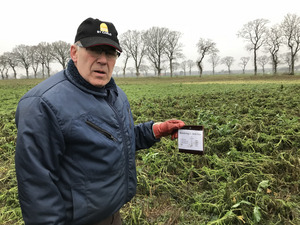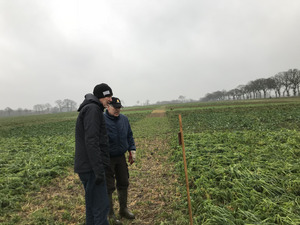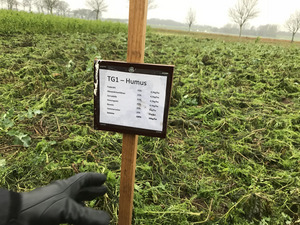Cover crops to reduce nutrient leaching (Sweden)
A farmer in southern Sweden started implementing conservation agriculture three years ago in order to address persistent problems with soil degradation, structure and moisture content on farms. This type of farming system can help regenerate degraded land by promoting permanent soil cover, reducing soil disturbance and diversifying species.



Problem encountered
As a result of intensive agriculture practices, farmers were experiencing problems such as loss of soil nitrogen, phosphorous, potassium and carbon due to nutrient leaching. High weed pressure and ploughing also exacerbated poor soil structure. This, in turn, had negative effects for the water-holding capacity and moisture content of soils, especially during dryer years. Furthermore, these practices contributed immensely to climate change and made farmers more vulnerable to the negative impacts of climate change.
Solutions implemented
In order to address these issues, the farmer has been practising conservation agriculture on 480 hectares in southern Sweden for the last 3 years, along with few other farmers in the region who have similar concerns and objectives. Instead of frequent mechanical activities on soil such as ploughing and harrowing, the farmer implemented an 8-year crop rotation to address soil borne diseases, weeds and declining fertility. The rotation comprises winter oilseed rape, winter wheat (2 times but not follow each other), faba bean, red fescue (2 times), spring barley, and spring oat (2 years).
In spring, at least 30% of the land is planted with spring crops to keep the land covered and prevent weeds, especially black grass. In addition, the farmer started growing diverse cover crops during the last three years, which help to reduce leaching of nutrients, build up soil carbon and water holding capacity, and reduce weeds. The farmer is also testing whether growing diverse cover crops in one year (rather than one at a time over multiple years) will compound the positive effects and allow him to grow oilseed rape (his best cash crop) more frequently or for longer periods of time. The cover crops being used include oilseed radish, Phacelia, red-fescue, and mixtures of cover-crops seeds (buckwheat, vetch, grass pea, clover, etc.).
Challenges encountered
Despite positive impacts, there are also several challenges that need to be overcome:
- The cover crops should be sown on the same day as the cash crops are harvested in order to reduce the risk of greater weed population and low germination of cover crops as the evaporation of moisture from the soil is very high during summer. This puts pressure on manpower, machinery and logistics.
- Handling of cover crop biomass in spring can also be challenging when it is too big as it can make the sowing and germination difficult
- If many cover crops survive the winter, they will become weeds and require herbicide application
- Growing oilseed radish as a cover crop presents a risk of club root disease for oilseed rape as they are from the same Brassica family
- In the autumn, there are also problems with snails, which can thrive on cover crops, thus increasing their damage to cash crops.
Why was it successful in this case?
One of the key factors for success was exchanging with others who are practicing conservation agriculture and learning from their experiences. In particular, input about timing and ways to sow cover crops was particularly helpful. For example, the farmer learned that sowing the cover crop immediately after harvesting the cash crop is extremely important.
Because of the practices applied, the farmer was able to reduce weeds and cost of diesel for ploughing as well as improve the soil quality, which has led to higher yields and a system that is more resilient to extreme weather events such as drought.
Since the farmer is largely motivated by addressing climate change (and the corresponding impacts) as well as improving soil health and biodiversity, these techniques have so far been successful for him. However, for those with different priorities, other factors may need to be taken into consideration in order to achieve success.
 tap and then scroll down to the Add to Home Screen command.
tap and then scroll down to the Add to Home Screen command.